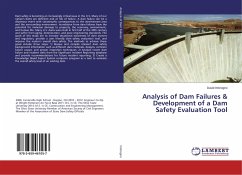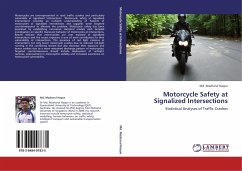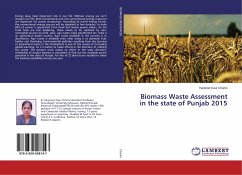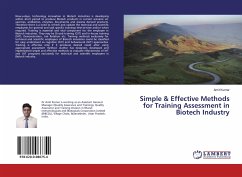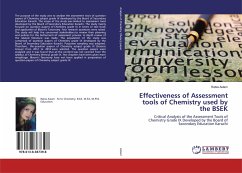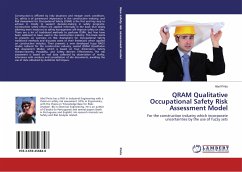
QRAM Qualitative Occupational Safety Risk Assessment Model
For the construction industry which incorporate uncertainties by the use of fuzzy sets
Versandkostenfrei!
Versandfertig in 6-10 Tagen
47,99 €
inkl. MwSt.

PAYBACK Punkte
24 °P sammeln!
Construction is afflicted by risky situations and meager work conditions. So, safety is of paramount importance in the construction industry, and Risk Assessment for Occupational Safety (OSRA) is the first and key step to achieve it, mostly to support decision-making in safety programs. Construction safety efforts are applied informally in the basis that simply allotting more resources to safety management will improve safety on sites. There are a lot of traditional methods to perform OSRA, but few have been validated to been used in the construction industry. This book starts to presents an o...
Construction is afflicted by risky situations and meager work conditions. So, safety is of paramount importance in the construction industry, and Risk Assessment for Occupational Safety (OSRA) is the first and key step to achieve it, mostly to support decision-making in safety programs. Construction safety efforts are applied informally in the basis that simply allotting more resources to safety management will improve safety on sites. There are a lot of traditional methods to perform OSRA, but few have been validated to been used in the construction industry. This book starts to presents an overview on Risk Assessment for Occupational Safety traditional methods and discusses some of their limitations when applied on construction industry. Then presents a new developed fuzzy RAOS model, tailored for the construction industry, named QRAM (Qualitative Risk Assessment Model, which is based on four dimensions: Safety Climate,Severity, Possibility, and Safety Barriers Effectiveness. The risk assessment is based on real data collected by observation of reality, interviews with workers and consultation of site documents, avoiding the use of data obtained by statistical techniques.



